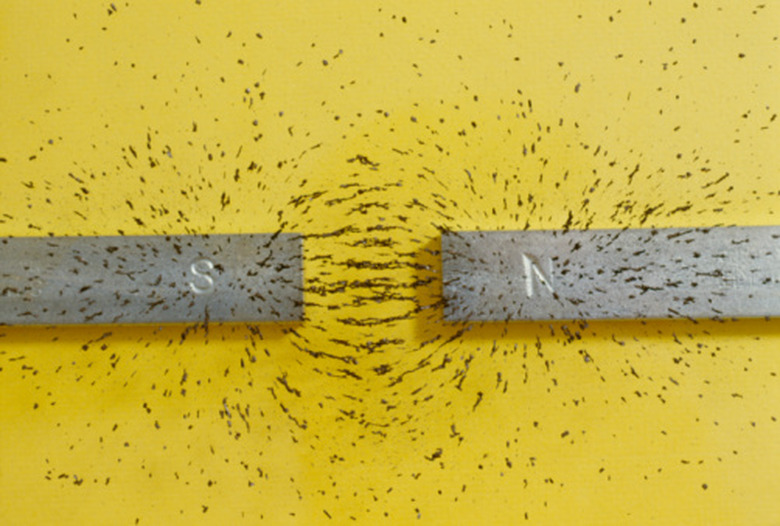Science Projects & Experiments With Magnets
Magnetism is a physical science content area that is typically addressed during the elementary grades, especially kindergarten through fourth grade. Some topics that students learn about include the basic properties of magnets, types of materials that are attracted to magnets, magnetic fields and electromagnets. Science projects and experiments in the classroom provide students with hands-on opportunities to observe and investigate magnetic properties and behavior.
Introduction to Magnets
Introduction to Magnets
Students may first begin to explore the concept of magnetism in kindergarten or first grade when they learn about pushes and pulls. Students learn that magnets attract some metal objects and apply this concept in simple, hands-on activities. Students use bar magnets to pull metal paper clips across a piece of paper and observe that the magnet can pull the paper clips without touching them.
Properties of Magnets
Properties of Magnets
Students build on what they have already learned or observed about magnets by testing a variety of objects made of different materials to find out if a magnet attracts them. Students test metal and nonmetal objects such as hair pins, metal buttons, crayons, wooden blocks and paper cups. Students classify the objects to show which ones the magnet attracts and record their observations on a chart. Students can also use two magnets to observe how opposite poles of magnets attract and like poles repel and then form an operational definition of magnets based on their observable properties.
Magnetic Fields
Magnetic Fields
Each magnet is surrounded by a magnetic field. The magnetic field is strongest around the poles and extends around the magnet in magnetic field lines. Students can construct a magnetic field viewer and use iron filings to see the magnetic field lines generated by a magnet. To make a magnetic field viewer, students put a small amount of iron filings in a plastic box and cover the box with a clear sheet of plastic that is secured to the box with tape. When students place a magnet on the cover of the box, the magnet's magnetic field attracts the iron filings, which line up on the magnetic field lines. Students can perform this test with magnets of different shapes and strengths and compare the results.
Electromagnets
Electromagnets
As students continue their study of magnets, they learn about the relationship between magnetism and electricity. Electricity flowing through a wire produces a magnetic field. The magnetic force is strengthened by coiling the wire around a piece of iron or steel. Older students can construct their own electromagnets using a metal bolt, insulated wire and D-cell battery. After coiling the wire around the bolt, students attach the exposed ends of the wire to the battery and secure it with electrical tape. Students can experiment with their electromagnet by turning it off and on, finding out how many paper clips it attracts and increasing the strength of its magnetic field by increasing the number of coils.
References
- National Academic Press: National Science Education Standards
- "SRA Real Science"; William Kyle, et al; 2000
- "SRA Snapshots Simply Science Teacher Guide"; John Lucas; 2009
- "SRA Snapshots Video Science Teacher Guide"; John Lucas; 2008
Cite This Article
MLA
Mentzer, Alissa Pond. "Science Projects & Experiments With Magnets" sciencing.com, https://www.sciencing.com/science-projects-experiments-magnets-8046096/. 24 April 2017.
APA
Mentzer, Alissa Pond. (2017, April 24). Science Projects & Experiments With Magnets. sciencing.com. Retrieved from https://www.sciencing.com/science-projects-experiments-magnets-8046096/
Chicago
Mentzer, Alissa Pond. Science Projects & Experiments With Magnets last modified August 30, 2022. https://www.sciencing.com/science-projects-experiments-magnets-8046096/
